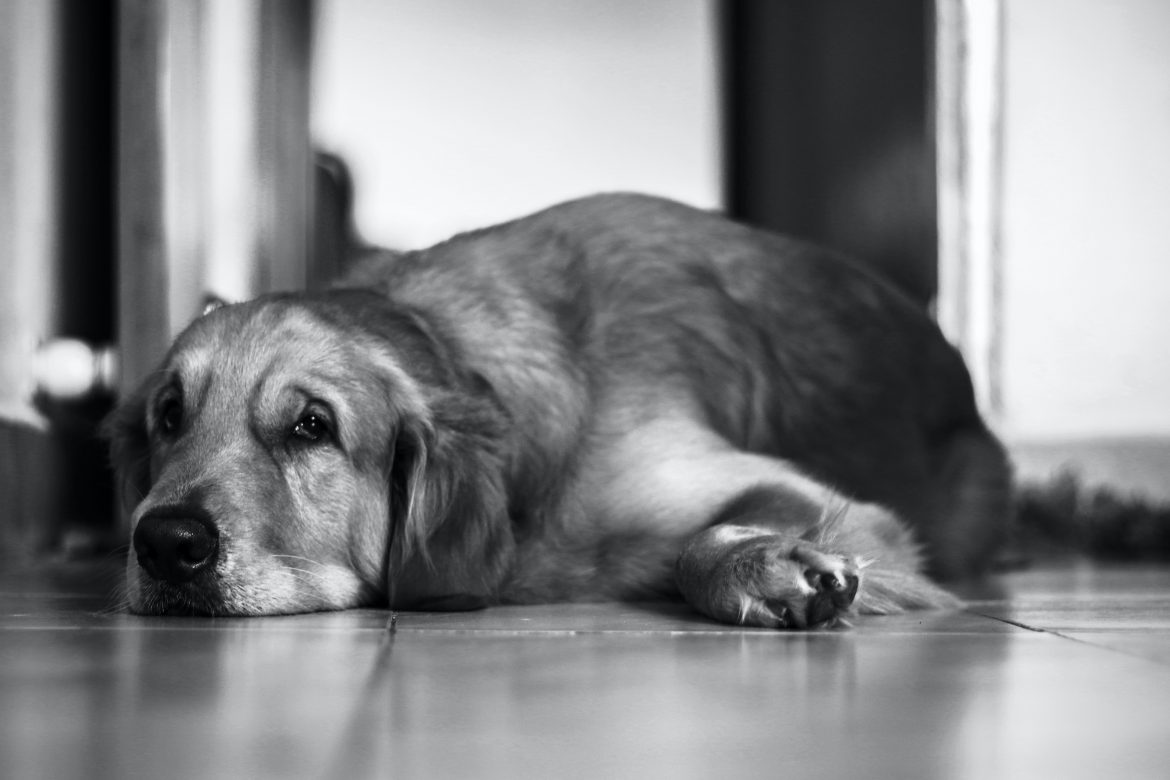Fold Dermatitis/Pyoderma may sound like a complicated, scary term. But it’s simply the medical name for a bacterial skin infection. And that means it’s entirely treatable. By knowing what the signs are, getting your pup to a vet, and following the treatment plan, you doggo will be free of irritation in no time.
Here is everything you need to know about fold dermatitis/pyoderma in dogs.

What does fold dermatitis/pyoderma in dogs look like?
While certain types of pyoderma can manifest all over the body, the type that we’re covering here is most often found in your pup’s skin folds. That may be the wrinkles around their face or neck, or, if you’ve got a really wrinkly pup, around the ankles or tail. It can also manifest in the less furry areas of your pup’s elbows, armpits, and groin.
If your dog is suffering from fold dermatitis, you’re likely to see redness and inflammation in these areas, as well as flaking skin, bumps, and hair loss. Pustules, or pus-filled bumps, may also pop up if your dog has this condition.
And, although this little detail is a bit off-putting, you may notice a musty smell that comes along with fold dermatitis/pyoderma in dogs.
What causes fold dermatitis/pyoderma in dogs?
Now that you know what you’re looking for, you may be asking yourself what causes this condition?
The common explanation is that moisture trapped in your dog’s skin folds creates the perfect environment for bacteria growth. With normal friction from moving around, the skin can become raw, inviting bacteria growth. There are a few other triggers that could lay out the welcome mat for these microscopic pests:
- The folds can become quite itchy, prompting your pup to scratch and chew at the area
- The presence of a pesky piece of plant matter like a burr or a seed that’s been trapped in the fold
- Mites, fleas, and other parasites
- Some medical conditions, such as certain autoimmune disorders, hypothyroidism, or nutritional deficiency.
Finding the cause of fold dermatitis/pyoderma in dogs is a key first step in treatment, so be sure to take your doggo to the vet if you think they might be suffering from this skin condition.
Are some dogs more prone to fold dermatitis/pyoderma?
Pyoderma is a fairly common skin condition in both puppies and adult dogs. But this particular type of pyoderma, found in the skin folds, can affect some dog breeds at a higher rate than others.
As you could probably guess, the breeds that we fawn over because of their adorable wrinkles are the ones at highest risk of developing fold dermatitis. Pugs, Bulldogs, Mastiffs, Bloodhounds, Shar-Pei, Saint Bernards, and Basset Hounds are all more likely to experience fold dermatitis/pyoderma.
But it’s not all about the breed. Overweight doggos sporting a few extra wrinkles may also be more prone to fold dermatitis/pyoderma in dogs.
What is a vet likely to prescribe for fold dermatitis/pyoderma in dogs?
The first thing that your vet is going to want to do is find the potential causes of the condition in your pup. They will inspect the area to see if there’s anything trapped in the fold and ask you a few questions about your doggo’s daily habits. They will also likely review your puppers medical history to determine if there are any clinical explanations for your dog’s pyoderma.
From there, your vet will recommend a treatment plan. Because fold dermatitis/pyoderma in dogs is a bacterial infection, you can expect that your pooch will be put on antibiotics. These can last anywhere from a couple of weeks to a month.
In addition, you may also have a treatment plan for the underlying condition. A pup allergic to fleas, for instance, may be prescribed a flea medication. A doggo who developed pyoderma because of a certain medication may be switched to an alternative. This part of the treatment plan will be unique to each doggo, depending on which trigger caused the fold dermatitis.
Finally, your vet may recommend a medicated cleanser or shampoo that will help fight the infection and irritation on the skin’s surface. They will walk you through how to administer the treatment or bathe your dog with the special shampoo.
We should mention that fold dermatitis/pyoderma in dogs has a high recurrence rate. So it’s crucial that you follow your vet’s instructions to the letter. Even if the condition seems to clear up before your pup has finished their antibiotics, make sure to stick with the plan laid out by your vet!
Are there any additional at-home solutions?
As we mentioned, the baseline treatment for fold dermatitis/pyoderma in dogs is antibiotics and whatever treatment may be necessary for the underlying cause. That’s why it’s very important to get professional care instead of relying primarily on at-home treatments.
That said, there are a few things that you can do while your pupper is battling the bacterial infection to make them more comfortable.
- Give your pup a cool, dry place to relax. Remember that part of the reason for fold dermatitis/pyoderma in dogs is moisture and heat trapped in the folds. You can help them manage the itchiness by giving them a cool, well-ventilated place to snooze.
- Take care with grooming. This type of bacterial infection typically attacks the hair follicles around your pup’s wrinkles, so take extra care with regular grooming. If you have a long-haired pup, your vet may recommend special grooming practices to keep the area clean and comfortable.
- Consider using an inflatable collar. If your doggo is chewing or scratching at the affected area, a dog cone may be in order. According to a study by the University of Sydney, dogs much prefer less intrusive equipment like inflatable collars to the traditional, bulky cone.
- Provide some stimulation. You know how difficult it is to focus on anything else when you have an itchy mosquito bite? The same is happening for your dog. Even though the inflatable collar will prevent them from scratching, you can help take their mind off of the discomfort with a visit from their friendly Dog Walker or some quality time playing mental games.
Even after the fold dermatitis has been treated, these tips may also lower the chance of the microscopic pests from coming back:
- Regularly clean you dog’s skin folds. You want those adorable wrinkles to be clean and dry all the time, especially after exercise and outings when the weather is hot and humid. If your dog is prone to this condition, make sure to let your dedicated Dog Sitter know that they should take a few extra minutes to wipe the wrinkles!
- Avoid areas with too many triggers. High grasses full of ticks, fleas, and scratchy plants can put your pup right back in the vet office. Best to avoid these areas or check your doggo’s skin folds and fur for any parasites.
- Take good notes. If your pup does experience pyoderma more than once, it’s a good idea to take note of some of the things that may cause it. Is it an allergen in their diet? Do they tend to develop it after visiting a particular dog park? The notes that you take can be used by your vet to find the true cause of the problem!
How quickly can you expect your pup to recover?
Every pupper will have a different recovery time for fold dermatitis. Depending on the antibiotic schedule or treatment plan prescribed by your vet, you’ll get a good idea of when to expect improvements.
Remember, even if your dog’s coat seems to clear up before the treatment is over, stick with it! Your doggo will appreciate not having to go back to the vet with another round of bacterial infection.
Fold dermatitis/pyoderma in dogs is quite common, but we hope that these facts and tips can help your pup recover quickly!

